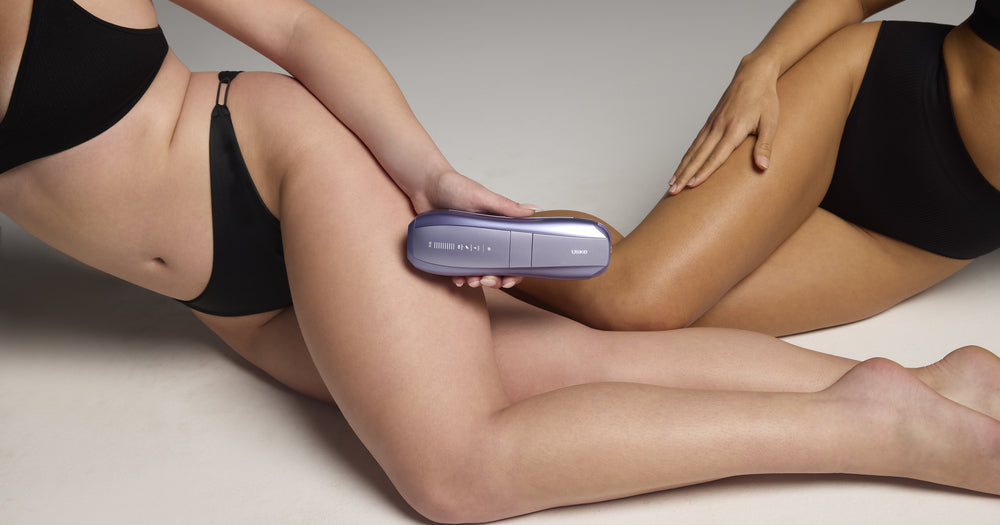Laser hair removal has become a popular choice for people seeking a long-term solution to get rid of unwanted hair. As an experienced dermatologist with extensive experience in laser hair removal, I believe that the best results are not only achieved in the treatment room. Proper aftercare is crucial to maximize the effectiveness of the procedure and ensure the health and well-being of the treated skin. In this comprehensive guide, I'll give you valuable insight and expert tips to guide you through laser hair removal aftercare.

- Part 1: Process of Laser Hair Removal
- Part 2: Immediate care after treatment
- Part 3: Medium-term follow-up
- Part 4: Long-term follow-up
- Part 5: Conclusion
process of laser hair removal
Before we get into the aftercare tips, it is important to have a basic understanding of what we are covering in this article. LASER is short for Light Amplification with Stimulated Emission of Radiation. This also gives us an idea of its basic principle. Lasers are used by practicing dermatologists all over the world for a variety of purposes. It is commonly used for hair removal, scar and skin rejuvenation, tattoo removal, and mole removal, to name a few examples.
In this article, we will look at laser hair removal and its aftercare. During the procedure, highly concentrated light beams are directed at the hair follicles, because the laser acts on the hair follicle by gradually burning the roots and eventually slowing the growth of the hair cycle in progressive sessions, resulting in significant hair reduction. The pigment in the hair follicles absorbs the light, which eventually destroys the hair. Although the procedure is effective, it requires careful aftercare to optimize the results and minimize the possible side effects.
Immediate care after treatment

-
Cooling and soothing measures
After laser hair removal, the treated area may be slightly erythematous (red) and tender. Applying a cold compress or ice pack wrapped in a thin cloth for about 30 minutes after the procedure can help soothe the skin and reduce redness.
Alternatively, aloe vera gel, known for its soothing properties, can be applied to the treated area. It is advisable to opt for a fragrance-free, hypoallergenic option to minimize the risk of irritation. However, it is still better to use an ice pack, as I give it to each of my patients in my practice and it has shown the best results, as the skin is very sensitive after the procedure and some people cannot even tolerate aloe vera.
-
Avoiding sun exposure
Treated skin is more vulnerable to UV damage after laser hair removal . It is important to avoid direct sunlight for at least a week after treatment. If outdoor activities are unavoidable, apply a broad-spectrum sunscreen with an SPF of at least 30 or higher. Reapply sunscreen every two hours to protect the treated area from harmful UV rays. If you do not take this precaution, you risk burning your skin after the procedure.
-
Avoiding irritants
Stay away from harsh skin care products such as retinoids and glycolic acids for at least a week before and after treatment. These can further irritate the treated skin. Scented lotions and perfumes should also be avoided during the initial healing period. It is advisable to use gentle, hypoallergenic moisturizers to hydrate the skin without irritating it.
medium-term follow-up
-
hydration
Moisturizing the treated area is essential to prevent dryness and promote optimal healing. Use a fragrance-free, hypoallergenic moisturizer to maintain skin moisture levels. Moisturize the treated area twice daily, paying special attention to any signs of dryness or flaking. Well-hydrated skin is more likely to recover without complications.

-
Gentle cleansing
Clean the treated area with a mild, fragrance-free cleanser to prevent infection and remove any residual treatment gel. Avoid vigorous scrubbing or rubbing the area as this can irritate the skin and delay healing. Pat the skin dry with a clean, soft towel, preferably a microfiber towel, rather than rubbing to minimize friction and reduce the risk of irritation.
-
Loose clothing
Opt for loose, breathable clothing made of pure cotton to avoid friction and irritation on the treated area. Tight clothing or even mixed fabrics can, in certain cases, worsen sensitivity and cause discomfort during the healing process.
Long-term follow-up care
-
follow-up sessions
Laser hair removal typically requires multiple sessions to achieve optimal results. To achieve permanent hair removal, it is important that you stick to the recommended schedule and complete the treatments. Many patients take long breaks, resulting in poor results. At least the first four to five sessions should be spaced monthly because the laser affects the hair cycle by slowing growth, and long breaks will result in poor results. Discuss any concerns or changes in your medical history with your dermatologist to ensure the safety and effectiveness of the procedure. For example, if you have polycystic ovary syndrome, it is very important that you keep your dermatologist updated on your plan and response to treatment, because the laser can only produce optimal results if the underlying cause is effectively treated.
While laser hair removal is effective, occasional touch-up treatment may be necessary even after the recommended number of sessions. In the long term, you may want to consider alternative methods such as shaving or depilatory creams (eg eflornithine cream) to manage residual hair growth between sessions.

Avoid waxing or plucking between sessions, as these methods can disrupt hair follicles and reduce the effectiveness of the laser. Also, do not bleach your hair, as the laser will not work on bleached or white hair.
-
Communicate with your dermatologist
Clear communication with your dermatologist is key to the best results. At follow-up appointments, discuss any unexpected side effects, changes in your medical history, or concerns about treatment. Your dermatologist may recommend additional skin care products or adjustments to your aftercare routine that are specific to your needs.
Conclusion
Laser hair removal aftercare is a collaboration between the dermatologist and the patient. By following these expert tips and incorporating them into your aftercare routine, you can improve laser hair removal results and enjoy smoother, hair-free skin. Remember, patience and consistency are the key to the best and most lasting results from this advanced hair removal method. That's why it's important to choose an experienced dermatologist who has plenty of experience using laser devices and who can provide pre- and post-procedure care and guidance to patients.




























